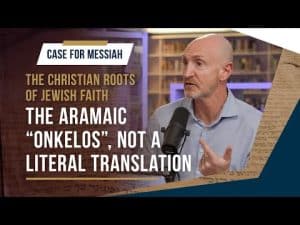God gives good gifts. When he gave Israel to the Jewish people, it was not just any old piece of land… God says in Deuteronomy 8,
“The Lord your God is bringing you into a good land… a land with wheat and barley, vines and fig trees, pomegranates, olive oil and honey”.
There are seven species of food mentioned here, which would be abundant in the land promised to His people, and it is the time leading up to the Jewish holidays when many of them are ripe and ready to be eaten. There is so much richness in what God has created and placed in this land for His people—not just in their good taste and nutrition, but in their meaning too. And the fig tree in the Bible is a fruit that crops up again and again, because God does nothing without purpose.
The blessing of figs
The man who checks bags for bombs on our transport system was eating juicy figs and gave one to me with a smile. There is something that just feels rich and decadent about figs. The amazing deep colors, the distinctive shape and glorious gentle smell. It is no wonder that this feature of God’s creation crops up repeatedly in the Bible in wonderfully symbolic ways. First of all, we see the figs in the garden of Eden—covering up the shame of Adam and Eve. In fact, it’s the only tree specified that we know for sure was in the garden. Throughout the Scriptures, the plant becomes a symbol of prosperity, wellbeing, and security. Along with the vine, to sit under the plentiful shade of your own fig tree is the epitome of safety, peace and wellbeing in many biblical passages. These plants don’t grow overnight, and it takes time to culture and nurture them—their maturity indicates that the gardener has been continuously and steadfastly there, tending to their growth over the years. For Israel, exile and wandering has been a byword for punishment and so sitting under your own vine and fig tree is a sign of blessing and security.
The fig tree in the bible: a metaphor for Israel
The fig tree in the bible is also symbolic of Israel itself—it often symbolized the health of the nation both spiritually and physically.1 Hosea 9:10 says,
“When I found Israel, it was like finding grapes in the desert; when I saw your ancestors, it was like seeing the early fruit on the fig tree.”
Later, the Bible tells us of the glorious time when,
“Judah and Israel lived in safety, every man under his vine and his fig tree, from Dan even to Beersheba, all the days of Solomon.” (1 Kings 4:25)
Later still, following the minor prophets we can see warnings to the nation of how God would bring destruction and failure of crops as part of His judgement against them, specifying empty fig trees that were stripped bare and fruitless. (Joel, Habakkuk and Haggai) It’s almost as if the fig was something of a barometer of the health of the nation – taken away as punishment, and flourishing in times of restoration.
In the New Testament we can also see Yeshua using the symbolic fig tree – firstly in the calling of Nathanael who was “sitting under a fig tree” like a “true Israelite” in John 1:48-50. Later he curses the fruitless fig tree, representing unfruitfulness (Mark 11:12-21), and then uses the fig as a metaphor of how we should recognise the signs of the times (Matthew 24:32). This end-times warning system with the fig analogy is picked up again in Revelation 6:13. So from Genesis to Revelation, the fig features strongly in scriptural symbolism. There are many more interesting references not mentioned here which are also worth exploring in Judges, Song of Songs, and parables of Yeshua.
Figs flourishing in Israel today
Today Israel is full of fig trees—huge, well developed, shady and mature. They produce two harvests of fruit a year, the early crop around Passover time in the spring, even before the leaves have unfurled, and the biggest, best, most juicy fruits come into their own in September, close to the Jewish holidays of Rosh HaShanah, Yom Kippur and Sukkot (Feast of Trumpets, Day of Atonement and Feast of Tabernacles respectively). It is possible to consider that the flourishing of figs today in Israel is a Messianic sign in itself – the people are back in the land, the fig trees are abundant and plentiful, and the nation is now waiting for restoration to come. We know that the restoration will be a spiritual revival, and all his people greeting their Messiah Yeshua, saying “Blessed is he who comes in the name of the Lord”, or “Welcome Yeshua, our Messiah!” Come, Lord Jesus, and find us ready!
[1] “Symbolism of the Fig Tree”














